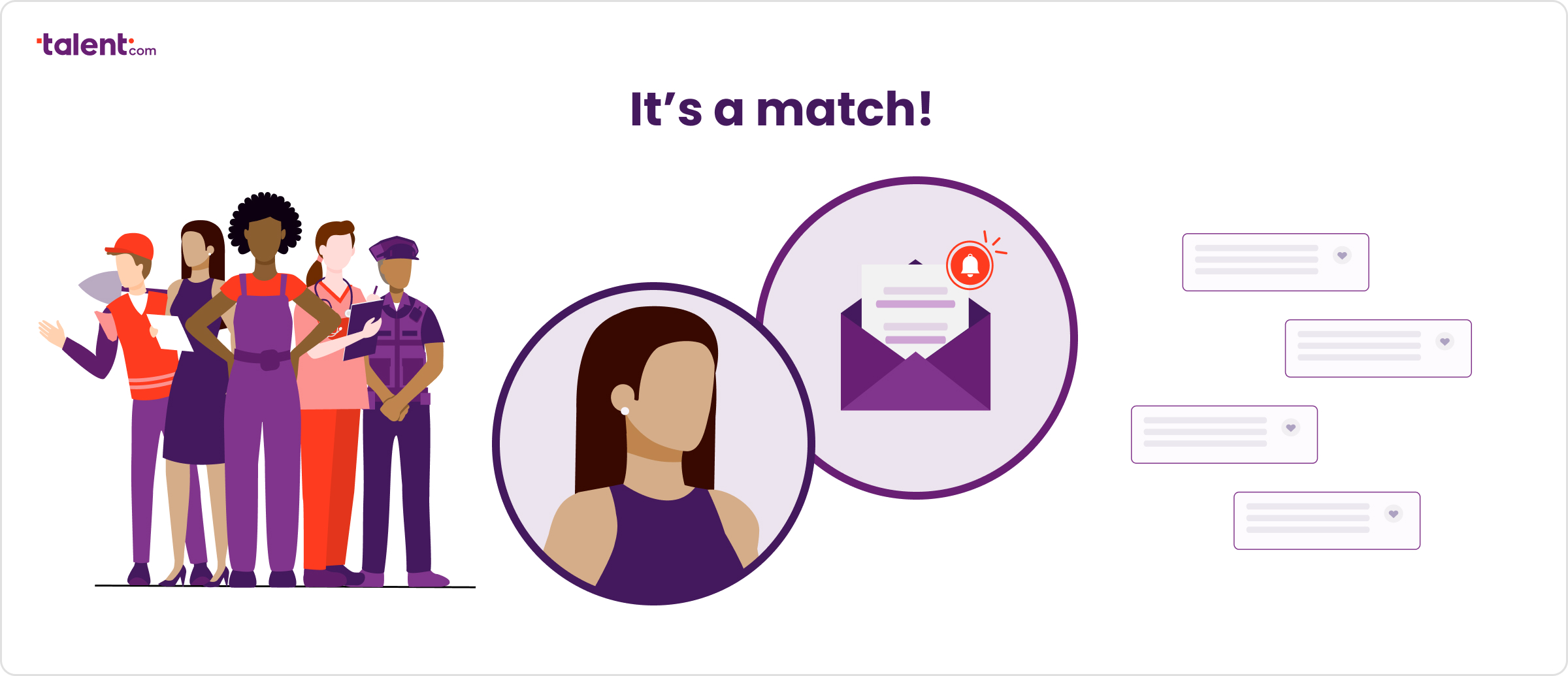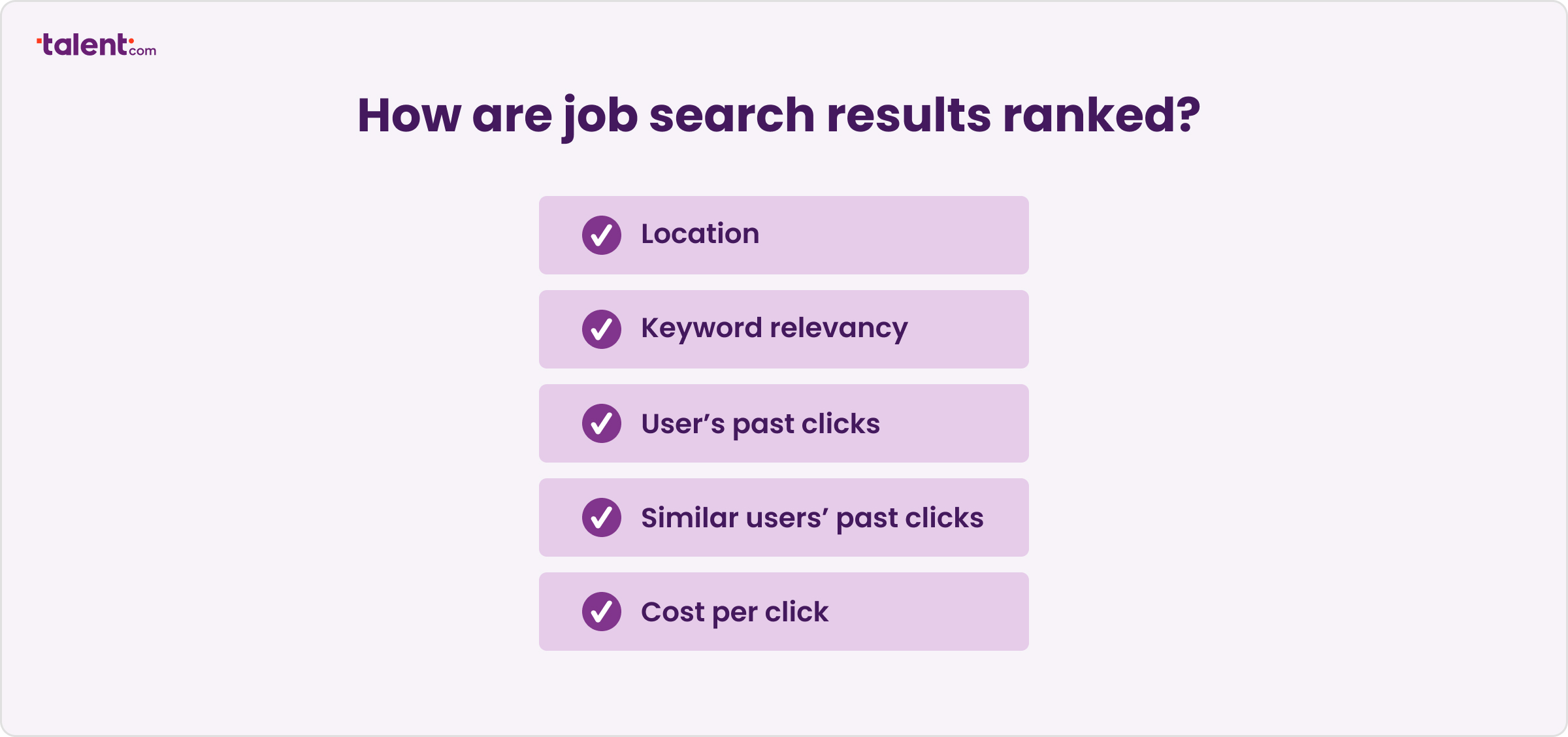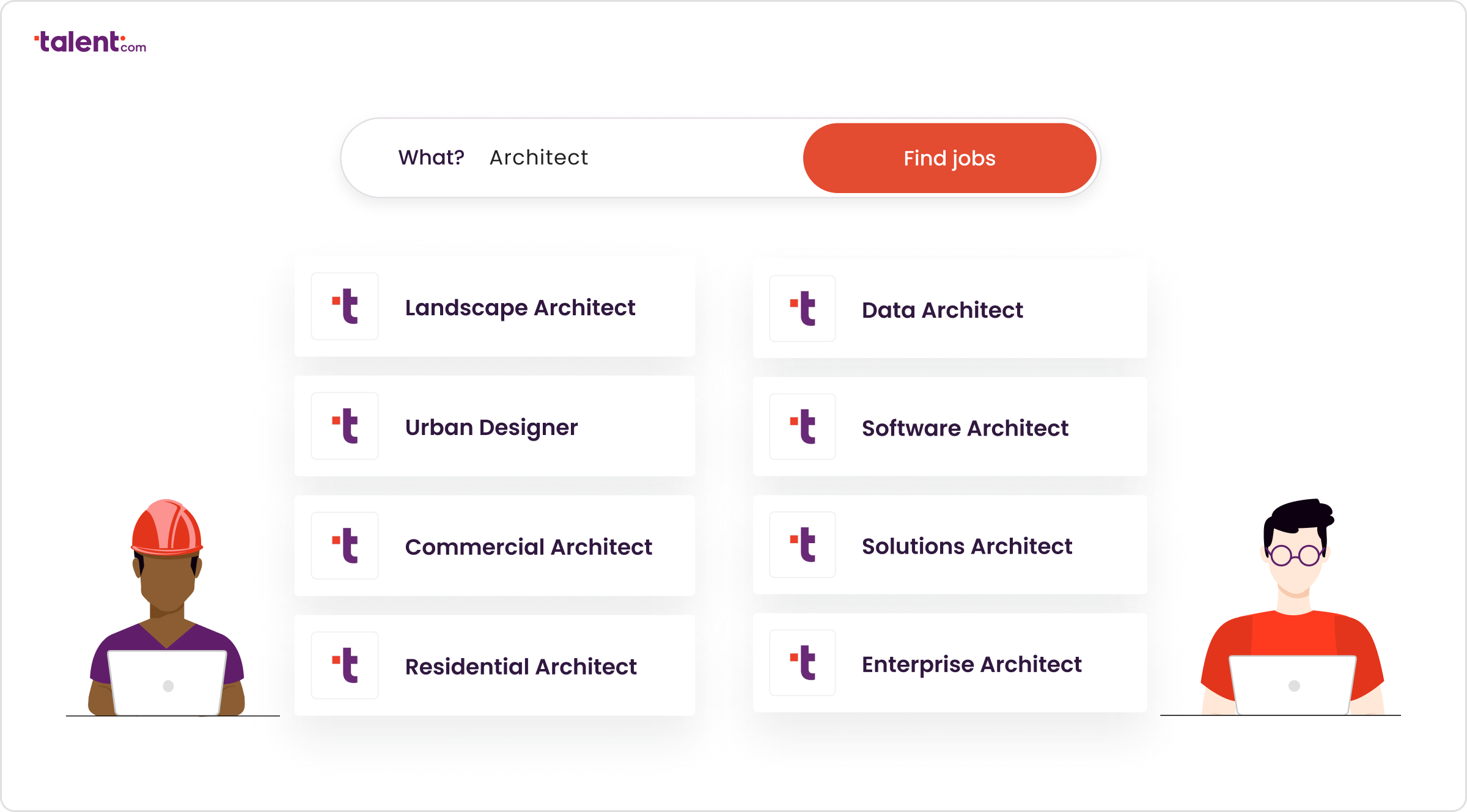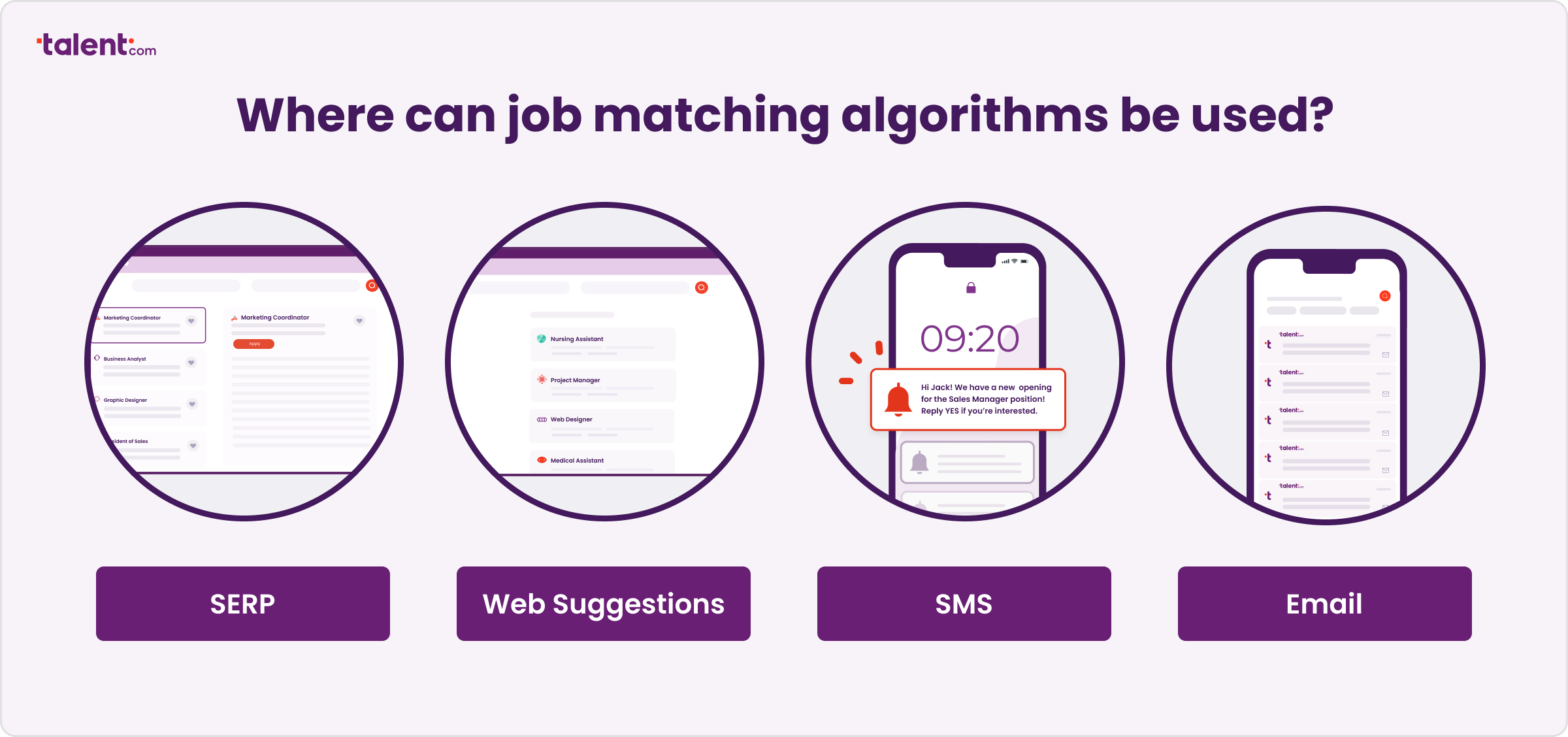What are job matching algorithms?
How can job matching algorithms help job seekers and recruiters?

What are job matching algorithms?
Chances are you’ve already come across matching algorithms online. E-commerce platforms such as Amazon and streaming services like Spotify have been using them for years to propose relevant and personalized products and songs to their users.
The world of recruitment is no different. When a visitor performs a search on a job platform, the results are personalized. This means that depending on elements such as a user’s past job searches, job views and job applications (and those of similar users), the platform can infer what kind of job this particular individual is likely to prefer and thus rank the results in the most relevant order.

Not everyone is the same, and not everyone wants to consume the same products, listen to the same music, or apply to the same jobs. Matching algorithms account for the little things that make us different and, in the process, they render the user experience that much more pleasant.

How can job matching algorithms help job seekers and recruiters?
In this day and age, providing a seamless user experience is a must for any platform. Having to sift through dozens of generic, uninteresting jobs can frustrate job seekers and prevent them from finding the jobs they are qualified for and likely to apply to. In contrast, the increased relevancy of personalized results and suggestions enhances the job search experience by reducing user efforts.
Over time, job matching technology can optimize certain recruitment metrics such as click-through rate, quality of hire, time to hire and cost per hire by ensuring the right people see your jobs first.
What’s more, job matching technology goes beyond the job search page. It is also used for example in job alerts, which are personalized suggestions frequently sent out to job seekers via email or SMS. They serve to notify them of interesting openings that fit their interests and skills.

What’s next in job matching?
Job matching technology has come a long way since its inception, but it is not perfect. It presents some limitations that engineers are working to surpass. Here are some of the evolutions this technology could experience:
Bias mitigation
Job matching technology can be very helpful to recruiters looking to source the best talent for each role. However, it would be inaccurate to think of this technology as completely objective and neutral. Since job matching algorithms are built by people from people-generated data, they can carry human bias and perpetuate harmful stereotypes. After all, the model only knows what it’s being fed. So, it could conclude, from the limited data it has access to, that certain jobs are gendered and thus propose nurse jobs to women and doctor jobs to men, for example.
We can start mitigating algorithmic bias by being mindful of the classifications we use. For example, Talent.com does not take into account the variables likely to discriminate, such as gender or race. By only collecting the necessary data, we ensure compliance with data protection laws, and we take a step towards fairer hiring processes.
Keyword analysis in different languages
Algorithms recognize keywords in the search query, compare them to the job offer database and make the appropriate connections (such as giving "real estate agent" results when someone searches for "realtor"). However, they are not yet well trained in every language. In fact, due to data scarcity, many minority languages are not as well served by job matching algorithms as English. The world is becoming more and more connected, so it is an increasingly important priority for machine learning engineers to make job matching technology available to all people, regardless of browsing language.
To this effect, Talent.com has already started implementing job matching technology in over 40 countries. We are constantly optimizing our algorithms and adjusting our natural language processing models to better understand and represent the wide variety of languages in the world.
Towards better accuracy
Another roadblock encountered is the accuracy of job suggestions. Sometimes, a user will receive an alert with a job that is not relevant, a job for which they do not want to apply. For example, a warehouse clerk might receive an alert for a "data warehouse developer" simply because both jobs, although completely unrelated, contain the same keyword. In such a case, the machine is not yet able to make a distinction that we as humans easily make.
The more people use a job search platform, the more voluminous its database becomes. As more machine learning engineers continue to build and train models, the relevancy of job suggestions increases.
Keeping the H in HR
Have we reached the point where machines can match people to their perfect job without human intervention? No. And after all, the core purpose of recruitment is to make human connections and we want to keep people at the heart of all human resources endeavors. The point of job matching technology is not to remove the human aspect, but to incorporate efficient automation into the hiring process. The goal is to provide a better candidate experience and enable HR professionals to focus on the tasks that matter most.
Talent.com is a leading job search and recruitment platform available in 78 countries. We help you post jobs, craft personalized digital campaigns and track performance to reach your hiring goals. On this blog, we use our industry expertise to inform and guide you in the development and implementation of your recruitment strategy. Follow us on LinkedIn or subscribe to our blog to get the latest scoop on job seeker interest, hiring news, job market trends and talent acquisition technology. Looking for advice to maximize your recruitment ROI? Contact our team of experts today.
Related articles
-
Product News
Talent.com Product News | Q3 2025
WELCOME TO OUR PRODUCT BLOG Quarterly Updates On Talent.com’s Latest Achievements | Edition #2 Following our recent rebuild of Talent.com’s product in...
-
Press Release Technology
Talent.com & TalentReef Integrate to Ease Recruiting Hourly Workforce
In 2022, the picture is clear: it’s a candidate’s market. Many employers are scrambling for workers, dealing with labor shortages and high turnover ra...
-
Case Study
Marriott Partner Easily Reaches Diverse Candidates with Talent.com
Marriott is an American multinational company that operates, franchises, and licenses lodging including hotel, residential, and timeshare properties. ...
